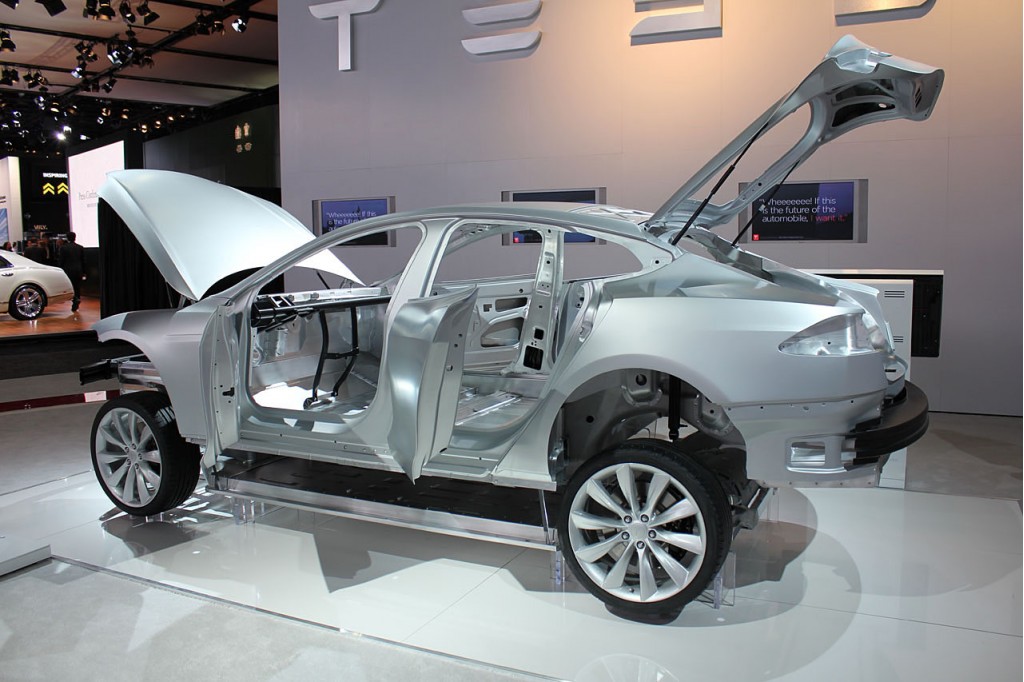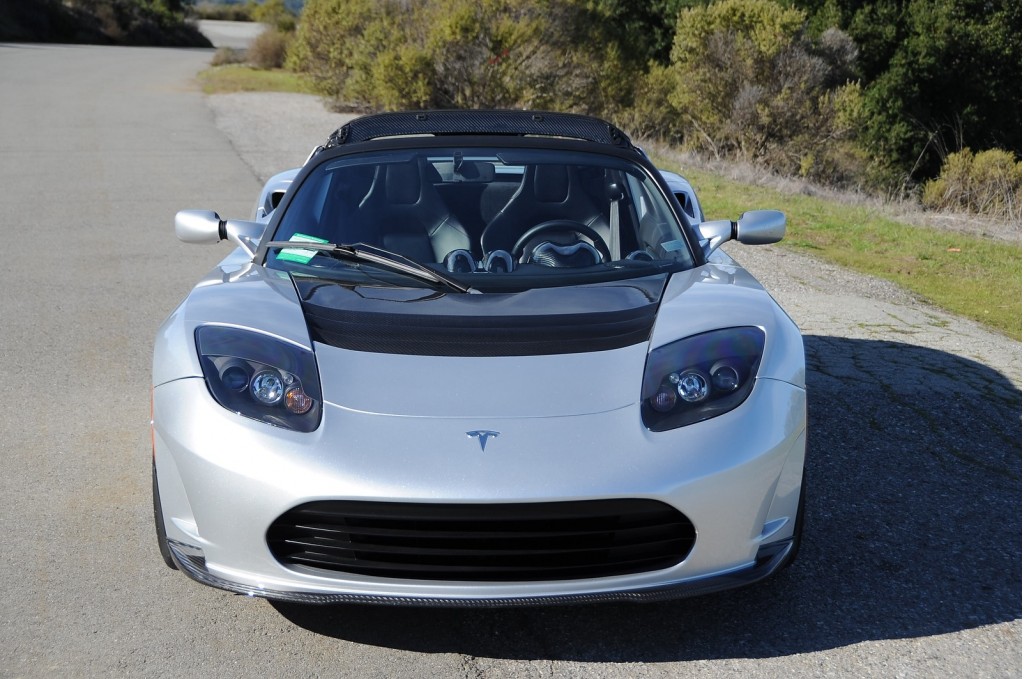Silicon Valley startup electric-car maker Tesla Motors released its 2010 earnings report yesterday, and--as you might expect from a startup that has sold only cars for three years--it lost money.
Investors apparently weren't fazed by the rising tide of red ink. Tesla shares closed yesterday at $22.84, down slightly from the previous day's close of $23.08, but opened today higher, at $23.10. The company's IPO was priced at $17 per share, and opened at $19.
For the full year of 2010, Tesla [NSDQ:TSLA] lost $154 million, almost triple its 2009 losses of $56 million. Revenues for 2010 were $117 million, only a tiny uptick over the previous year's $112 million.

2012 Tesla Model S body-in-white
To put that in perspective, that means Tesla spent more than $270 million last year. Which isn't surprising, considering that it has moved into full-scale engineering of its next car, the Model S electric sports sedan, and started work on the Fremont factory it bought from Toyota to build it in.
Since the first Roadsters were delivered to the public early in 2009, Tesla has sold slightly more than 1,500 Roadster and Roadster Sport models. But production of the Roadster will cease at the end of 2011, by which time Lotus will have assembled 2,400 rolling chassis, which are shipped to California for powertrain installation.

2011 Tesla Roadster Sport. Photo by Joe Nuxoll.
Sales of the 2011 Roadster will likely continue into next year, but Tesla faces a revenue gap from then until the first Model S sedans roll off the line. The company says that will happen before the end of 2012, perhaps in the third quarter, but as with the Roadster, production is likely to ramp up slowly.
The Model S is planned as the first of a line of all-electric vehicles built on the same basic understructure, including a 'Model X' crossover. There will also be a replacement for the Roadster, scheduled for 2013.
Tesla Motors has partnerships with Daimler, Panasonic, and Toyota, and it assembles battery packs for Daimler, which uses them in low-volume production of both its Smart Electric Drive minicar and its Mercedes-Benz A-Class E-Cell subcompact.

2012 Toyota RAV4 EV
In a similar vein, the company will also be paid $60 million by Toyota as part of a deal to build and assemble powertrains for the 2012 Toyota RAV4 EV that was shown at last fall's Los Angeles Auto Show.
Many industry experts remain skeptical that Tesla can complete the development and testing of Model S that fast, especially given the far higher standards for fit and finish, quality, feature sets, and general luxury in the pricey sports-sedan segment.

Tesla Model S prototype on the road, January 2011, screen capture from video
Last month, Tesla released a video showing a Model prototype on handling tests, meaning that there's at least one running prototype (if not several in different regions undergoing simultaneous testing).
And judging by reaction to the earnings report, investors seem willing to give Tesla the time it needs to develop its first high-volume electric car. For the moment, anyhow.

Peter Rawlinson, Tesla Motors vice president and chief engineer
You can be sure that progress on the Model S will be watched very, very closely until the first ones roll out of the Fremont factory (and after too). When we interviewed him in January, Tesla chief engineer Peter Rawlinson looked utterly exhausted.
Ultimately, most analysts don't expect Tesla Motors to remain independent. The company is likely in play to some degree already, with sale to another automaker getting more likely as the Model S gets more real--perhaps when early driving reviews start to filter out.
Stay tuned.
[GigaOm]
+++++++++++













